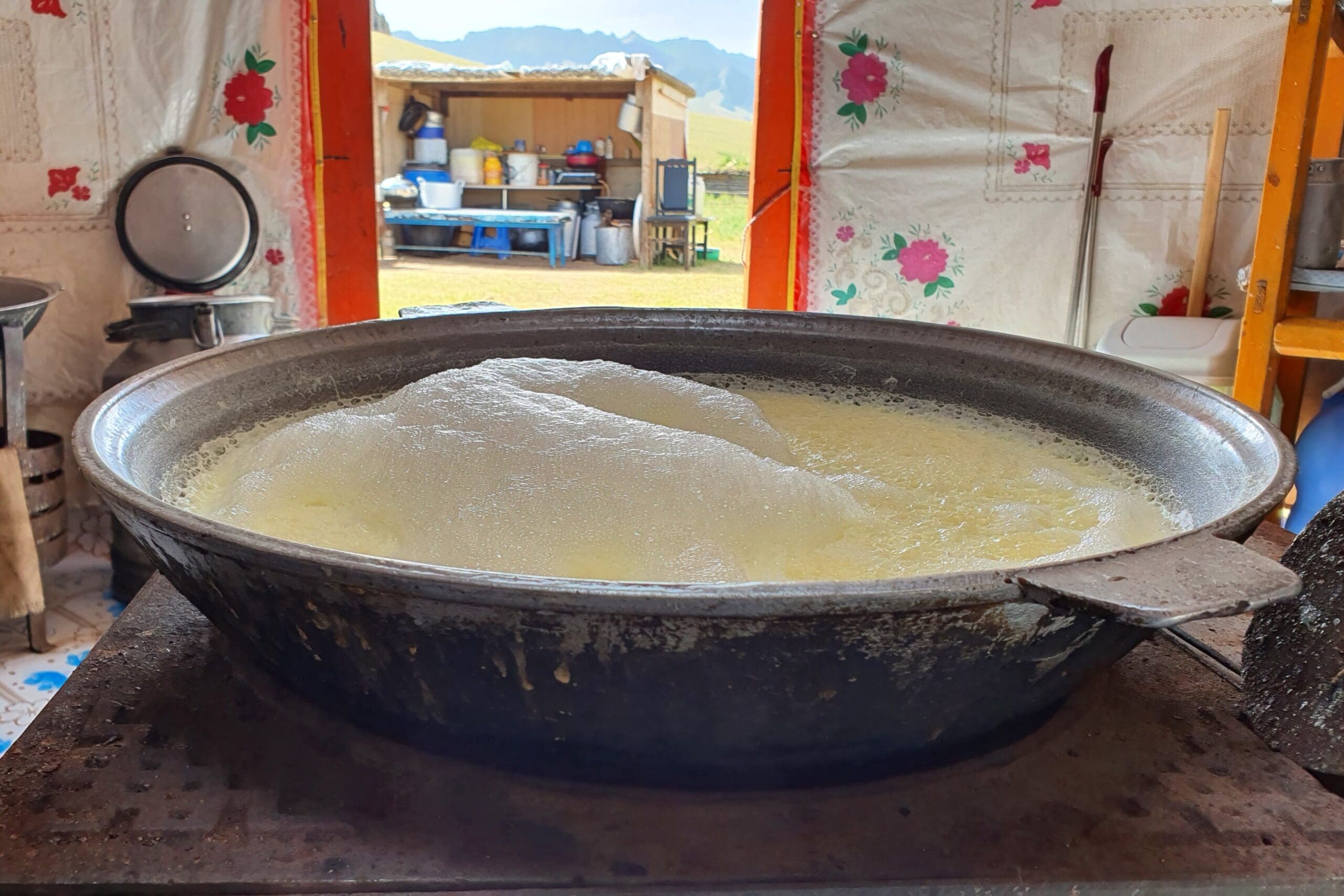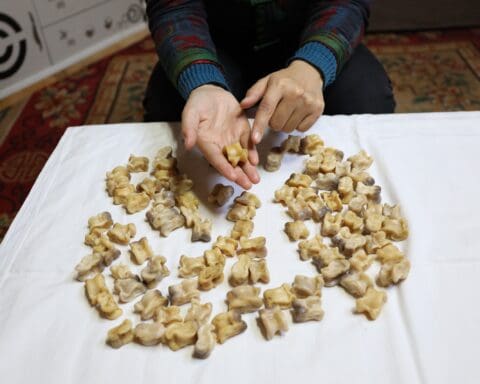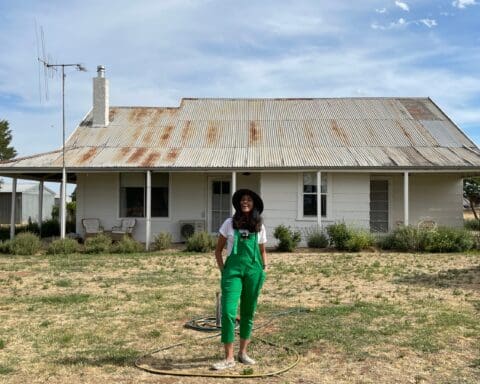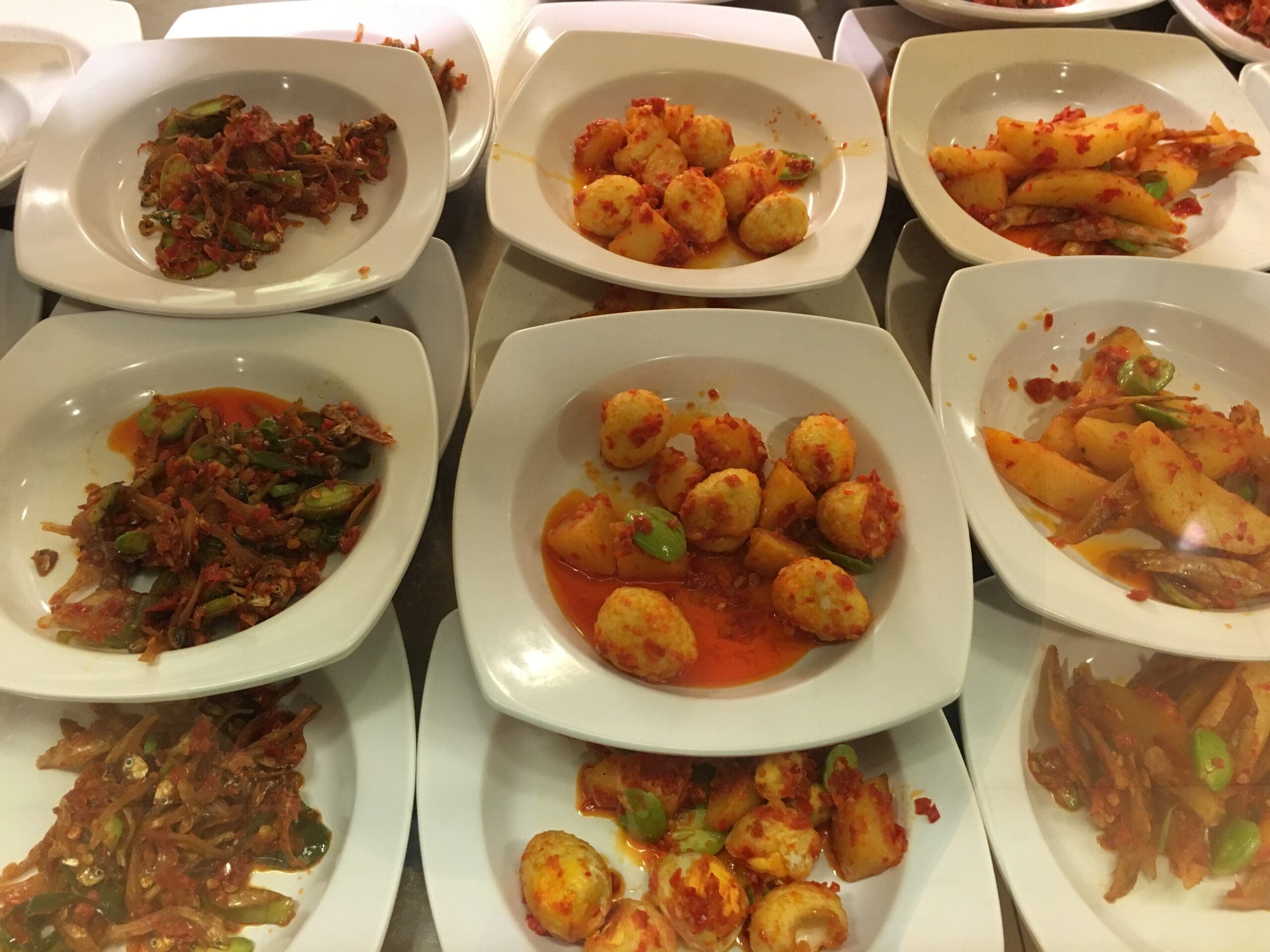“The ladle should not face the door when you are pouring the milk“, Lkhama advised us before continuing with “giving away good luck” as the reason why. Lkhama was in the middle of teaching us how to make Mongolian tea, the traditional kind that has been a part of nomadic Mongolian culture for centuries.
For the Mongolian nomads, this tea is equivalent to water. They drink it throughout the day, replacing water. From the morning until nighttime, as breakfast and during summer, like meals.
“It gives a lot of energy,” Lkhama told us before stirring the pot. Moreover, it was beautiful to watch. Having prepared it most of her life (starting from the age of 7 – which is typical for girls who are born in nomadic Mongolian culture who begins work at the age of 5 by milking small herd animals such as sheep and goat), Lkhama has mastered the art of Mongolian tea tradition, from the making to the serving.
How To Make Traditional Mongolian Tea
The traditional way of preparing the tea is to use the stove inside the Ger that burns wood and cow dunks to sterilize the air, which supposedly smells nice. Firstly, she poured a bucket of water into the pot gathered from the well that was a bit far off from the national park. The water was kept in the bin and can be used for many purposes. This time it was for tea making. Lkhama proceeded to put a teabag into the boiled water and let it simmer for five minutes. She then added a big pot of fresh cow milk which she milked from the cows her family-owned earlier that day.
She added one teaspoon of salt and took out the teabag a couple of minutes later. Then came the spiritual part of the tea making. Lkhama took a medium-sized spoon and scooped the milk from the stove before pouring it back onto it from high up. She claimed the higher we go before running the milk back into the furnace, the creamier; therefore, the more delicious the tea will be. It reminded me of the traditional way of making the Tarik. Traditionally we are supposed to do it (the scooping and pouring back the milk) 108 times. “Make the mind and body relax“, claimed Lkhama.
A meditative moment in the kitchen. A cross-cultural thread for us who finds cooking relaxing, myself included. The last thing to add to the pot? A big chunk of homemade butter.
A few stirs later, Lkhama turned off the stove and poured the freshly made tea into a thermos to keep the tea hot as long as possible (the weather in Mongolian can dip to minus 30 degrees).
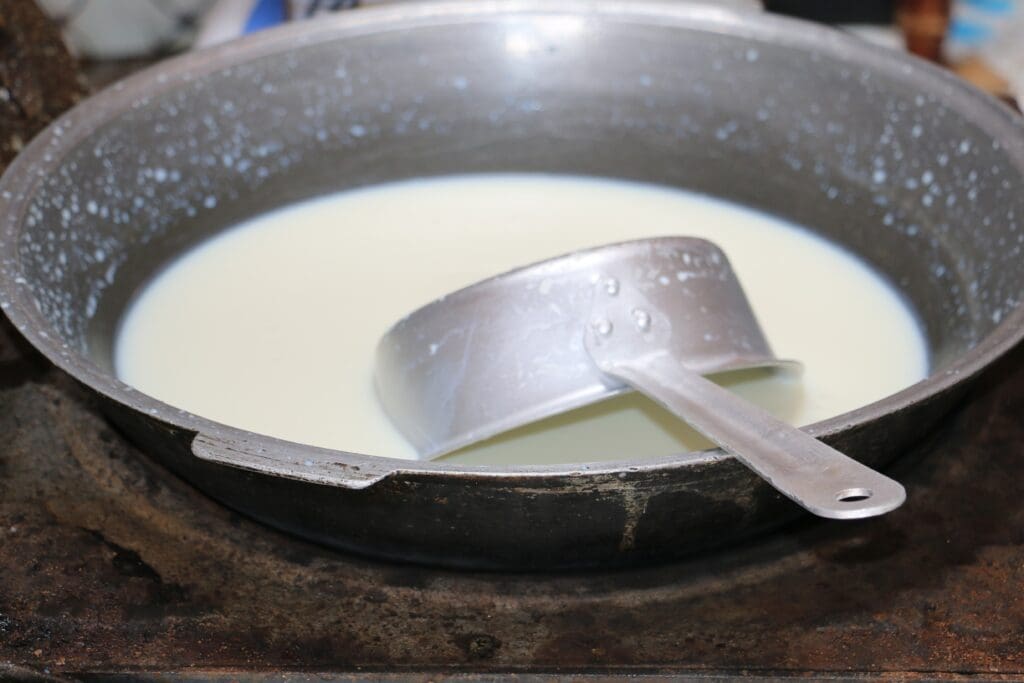
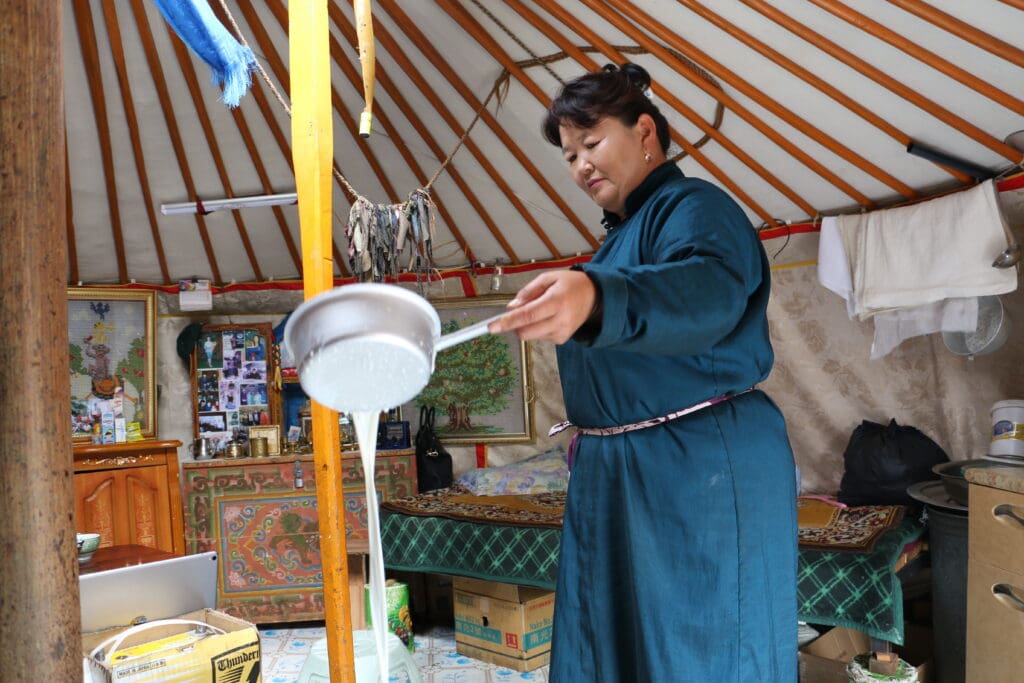
Mongolian Tea Tradition
Lahkma placed the thermos on the dining table in the middle of the Ger before pouring it into the tea bowls that looked very similar to the Japanese matcha bowls.
The first bowl is always for her husband, the head of the house. Even if he is not around today, she still poured it for him and placed it separately. Then she proceeds to share the tea around the table. The custom is to pass the bowl with two hands and receive it with two hands, again similar to the Japanese tea ceremony.
“We show respect to the tea,” Lahkma told us.
And for the same reason, even though Mongolian nomads sometimes have an outdoor summer kitchen, they always make the tea inside the Ger.
Suutei Tsa – Mongolian Traditional Tea
The Mongolians like their tea hot, making sense since the temperature regularly dips down to minus 30 degrees. So they sip it slowly, like a broth and start to feel the nourishment from the richness of the milk and the love and care shown during the preparation.
The tea tradition has been so embedded into the Mongolian nomad culture that they have it all year long – Lkhama herself makes at least three fresh batches of this tea every day, repeating the 108 pouring process each time she makes Suutei Tsa. She said I must drink it every two hours before adding, “otherwise, I will get a headache“.
The tea can be drunk by itself, but usually, for breakfast or snack time, it’s accompanied by fried dough, dried curd, butter and fried butter (a fried mixture of flour, sugar and butter) – any or all of them dipped into the tea bowl itself. It’s a breakfast loved by the locals, both children and adults.
Meanwhile, for lunch or dinner, it’s common to add rice or meat jerky into the tea. And during winter, the same tea is turned into a stew by adding meat dumpling, a bit of pepper and salt into it – again to be eaten as a meal. “Weather not good. Drink dumpling tea,” she advised.
I must say, even though I am plenty familiar with tea culture, I can’t wait to try my first sip of buttery jerky tea. I bet it’ll be delicious!
Follow me on Instagram@KultureKween for more recent updates.
